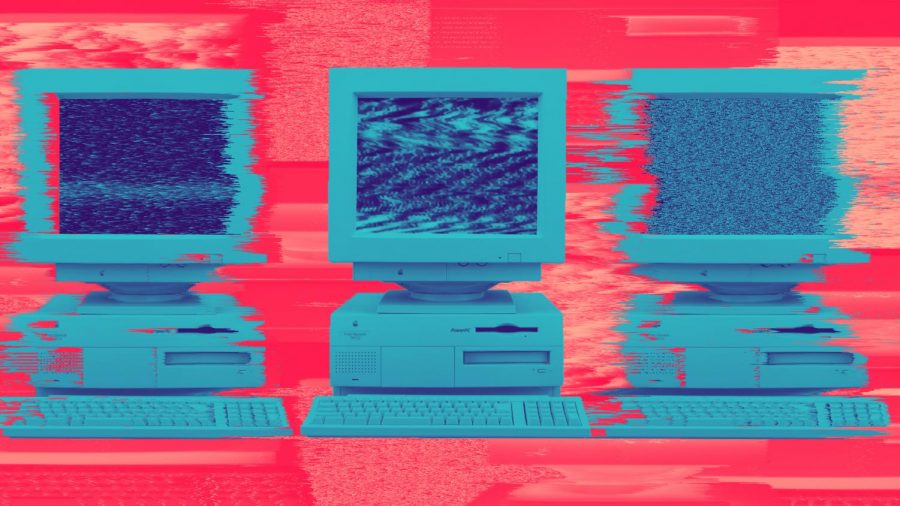Alexander & Brown: The U Must Plan Better For Future Crises
(Graphic by Sydney Stam | The Daily Utah Chronicle)
July 1, 2021
We’ve heard a lot about the impact of the coronavirus pandemic on students, ranging from academic hardships to negative health effects and the decline of social interaction. But university students faced unique challenges amid this pandemic. Already confronted with the rising cost of higher education, we had to suppress our dreams and college experiences to follow national health guidelines and university recommendations during the outbreak.
The traditional college experience hasn’t returned for over a year now, denying students opportunities they paid top dollar to receive. Thankfully, the University of Utah recently began returning to normalcy, striving to bring back ordinary campus life. However, based on the way the U handled pandemic instruction, it clearly needs to be better prepared to provide academic instruction and social outlets in case of another major crisis.
Social, Academic and Mental Health Challenges
The social aspects of college greatly enhance the experience of attending a higher education institute. Universities provide a necessary social blending for young adults, such as lifelong friends, business associates and romantic partners. However, the pandemic erased our opportunity to build relationships when classes, clubs and sports halted. Intramural sports, for example, usually provide a crucial outlet for students to engage in physical and social activity. But as of today, these have yet to return.
The academic hits didn’t go unnoticed either. At a critical time in the semester, classes went online and U students were forced to learn how to learn and stay motivated in this new learning style. The online experiment was initially scheduled to last two weeks. However, as time went on, it became clear that it was no two-week circuit breaker. In 2018, almost 35% of U.S. undergraduates took online classes at all. Following Spring 2020, nearly all undergraduates were taking online classes, with little to no in-person options.
As the pandemic progressed, many had trouble adjusting to the online format. Some issues went unaddressed by the U. For starters, students and faculty were definitely unprepared for online learning. There were technical difficulties more often than not. Either a teacher couldn’t work the Zoom link or Canvas, which resulted in delaying or cancelling class, or a student was not aware of how to access class resources and lectures. Online learning allowed for more cheating and had other adverse effects. Students ultimately fell behind in class and didn’t receive the instruction they were guaranteed and paying for.
The elimination of our fall and spring breaks also greatly disheartened students, faculty and staff alike, to the point where some teachers would randomly give days off to students. Not only that, but ASUU had to ask faculty to consider granting days off for the sake of mental health, and individual faculty decided whether or not to do so. These inconsistencies unnecessarily let down students struggling in an already taxing pandemic.
Where the U Failed
U administration was obviously just as blindsided as the rest of us by the pandemic. While we should be understanding of the abrupt changes, their lack of preparedness led to unfair learning conditions for their students. On the academic side, the U gave their students an easier path to good grades for most classes. Along with allowing for a CR/NC option, some professors graded far easier than they would under normal circumstances. While this may seem fair, it allows for less effort — and therefore, less learning — from students to get an A.
In future crises, the U should hold students to normal standards. At the beginning, the option was somewhat justified. Students were undergoing a variety of crises at once, making the end of the semester particularly hectic. But as summer classes began, the online requirement was extended, and U students who willingly chose to take summer courses could coast. With the tuition we’re paying, we deserve high-quality education.
In terms of socialization, the University of Utah could have done a far better job mitigating the indirect effects of the pandemic. While the U successfully kept case counts low, they did so at the cost of most social interaction. From March 2020 to March 2021, almost everything social at the university ceased. This contributed to the worsening of mental health problems during the pandemic. The drive to keep the case count down was absolutely justified. But when social interaction plays a critical role in mental and physical health, it can’t simply be ignored.
Distanced and masked intramurals could have come back in fall 2020 or spring 2021, but they didn’t. Outdoor speeches and academic events could have made an appearance during that time, but they weren’t. When other major universities found solutions, the U seemingly didn’t try. In the unlikely event that another crisis threatens the health of students, the U must work harder to provide some sort of solution to these issues. Mental health is just as serious as physical health, and the U favored the physical.
What the U Should Do
Since a pandemic seems to be a once-in-a-century type of problem, the ultimate hope is that the U does not have to handle similar issues in the near future. But as we’ve all learned over the past year, we should all expect the unexpected. The U was not well equipped to deal with the impacts of the pandemic. They left gaping holes in their academic and social approaches that often left students out to dry.
However, by planning the future — one that involves normal academic standards and compassion for mental health issues — university administration won’t need to to relive this nightmare. In situations like this, preparation is key, and it’s time the U starts preparing.










